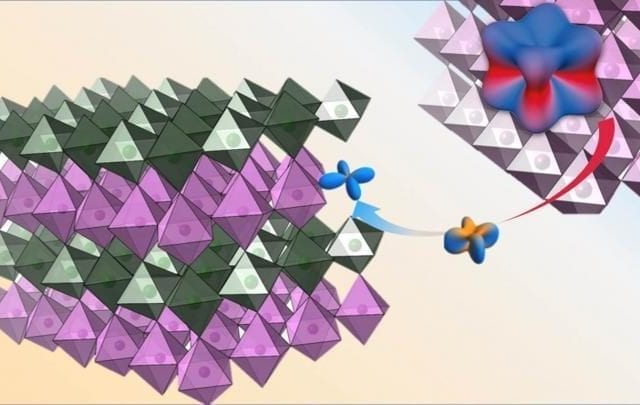Samsung Electronics Co., Ltd. today introduced the industry’s first 0.7-micrometer (μm)-pixel image sensor, the 43.7-megapixel (Mp) Samsung ISOCELL Slim GH1. Thanks to advanced ISOELL Plus technology, the new ultra-high-resolution GH1 image sensor embraces 43.7-million 0.7μm-sized pixels in a super-small package, providing the optimum solution for slim full-display devices.
UMC Receives Final Approval for 100% Acquisition of Mie Fujitsu Semiconductor
United Microelectronics Corporation (NYSE: UMC; TWSE: 2303) (“UMC”), a global semiconductor foundry, today announced that the company has satisfied all closing conditions, including final approval from all relevant government agencies, for the full acquisition of Mie Fujitsu Semiconductor Limited (MIFS), the former 300mm wafer foundry joint venture between UMC and Fujitsu Semiconductor Limited (FSL). The completion of the acquisition is scheduled for October 1, 2019.
Bottom-Up Synthesis of Crystalline 2D Polymers
Scientists at the Center for Advancing Electronics Dresden (cfaed) at TU Dresden have succeeded in synthesizing sheet-like 2D polymers by a bottom-up process for the first time. A novel synthetic reaction route was developed for this purpose. The 2D polymers consist of only a few single atomic layers and, due to their very special properties, are a promising material for use in electronic components and systems of a new generation. The research result is a collaborative work of several groups at TU Dresden and Ulm University and was published this week in two related articles in the scientific journals “Nature Chemistry” and “Nature Communications”.
Iridium ‘Loses Its Identity’ When Interfaced With Nickel
Iridium “loses its identity” and its electrons act oddly in an ultra-thin film when interfaced with nickel-based layers, which have an unexpectedly strong impact on iridium ions, according to Rutgers University-New Brunswick physicist Jak Chakhalian, senior author of a Rutgers-led study in the journal Proceedings of the National Academy of Sciences.
Intel Updates Advanced Packaging Technologies at SEMICON West Part 3
The SEMICON West workshop was unusual in that all the presenters were from Intel’s Assembly Test Technology Development (ATTD) group, and the session kicked off with a review of ATTD by Corporate VP Babak Sabi. The scope of their activities ranges from wafer sort, die preparation, and identifying known good die, through assembly, test, die finish, and board development, and also substrates, tooling, and other assembly materials; so pretty well the whole spectrum. They have quite the complex in Chandler (Arizona), as well as other facilities in Oregon and Malaysia.
MagnaChip Targets Fast-Growing e-Bike Market with High-Performance MOSFET
MagnaChip Semiconductor Corporation, a designer and manufacturer of analog and mixed-signal semiconductor products, announced today the release of a 100V Mid-Voltage MOSFET with a new thermal package designed for the fast-growing e-Bike market. This MOSFET with M2PAK-7P is suitable to meet the particular requirements of electric bike (e-Bike) systems.
Tachyum Joins Intel, AMD, and nVidia With New Headquarters in Santa Clara
Tachyum, a semiconductor startup and developer of the world’s first Universal Processor platform, today announced the opening of its new, larger corporate headquarters in Santa Clara to better accommodate the rapidly growing number of customers, partners, vendors and its growing personnel ranks. The new offices are located at 2520 Mission College Blvd, Suite 201, Santa Clara CA 95054. Tachyum’s new facilities will better enable the company to finish development, start marketing and selling its disruptive products that tackle the most pressing global issues in data centers, AI, telecommunications, edge computing and mobility today.
Erik Pederson Joins Semiconductor Industry Association as Government Affairs Director
The Semiconductor Industry Association (SIA) announced Erik Pederson has joined the association as government affairs director. In this role, Pederson will work with Congress, the White House, and federal agencies to advance the semiconductor industry’s policy priorities, particularly those related to trade, export control, and tax. SIA represents U.S. leadership in semiconductor manufacturing, design, and research.Pederson most recently served as director of government relations at the Chicago Council on Global Affairs, a bipartisan think tank.
Cree Announces Update to Capacity Expansion Plan
Cree, Inc. today announced plans to establish a silicon carbide corridor on the East Coast of the United States with the creation of the world’s largest silicon carbide fabrication facility. The company will build a brand new automotive-qualified 200mm power and RF wafer fabrication facility in Marcy, New York, complemented by its mega materials factory expansion currently underway at its Durham headquarters.The new fabrication facility, part of a previously announced project to dramatically increase capacity for its Wolfspeed silicon carbide and GaN business, will be a bigger, highly-automated factory with greater output capability.
Illinois Researchers Develop New Framework For Nanoantenna Light Absorption
Harnessing light’s energy into nanoscale volumes requires novel engineering approaches to overcome a fundamental barrier known as the “diffraction limit.” However, University of Illinois researchers have breached this barrier by developing nanoantennas that pack the energy captured from light sources, such as LEDs, into particles with nanometer-scale diameters, making it possible to detect individual biomolecules, catalyze chemical reactions, and generate photons with desirable properties for quantum computing.
